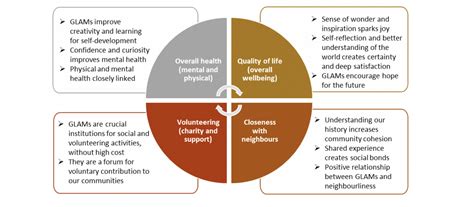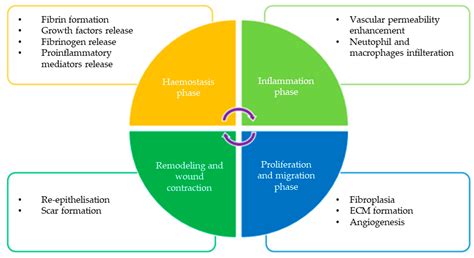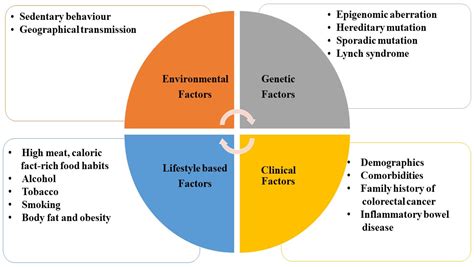The 2014 Ebola outbreak marked one of the most devastating health crises in recent history, with far-reaching consequences for both humans and animals. Originating in West Africa, the epidemic rapidly spread across borders, highlighting significant gaps in global health preparedness. This comprehensive overview delves into the outbreak’s background, timeline, and impact, focusing on the intricate dynamics of Ebola transmission between humans and animals. Particularly crucial for pet owners, this article examines the role pets played during the outbreak, key lessons learned, and essential preventive measures. Stay informed and proactive
dominure.com offers a detailed exploration of this topic.
1. Background and Origin of the 2014 Ebola Outbreak
The 2014 Ebola outbreak, also known as the West African Ebola epidemic, began in Guinea in December 2013 and quickly escalated into the largest and most complex Ebola outbreak since the virus was first discovered in 1976. The Ebola virus, belonging to the family Filoviridae, is a zoonotic pathogen, meaning it is transmitted from animals to humans. It is believed that fruit bats, which serve as natural hosts, were the primary source of the outbreak.
The initial cases were reported in a small village in southeastern Guinea, where a two-year-old boy, later identified as the index case, succumbed to the disease. The virus then spread rapidly through direct contact with bodily fluids of infected individuals, including those who had died from the virus. Traditional burial practices, where mourners often had direct contact with the deceased, significantly contributed to the virus’s transmission.
From Guinea, the outbreak quickly spread to neighboring countries, including Liberia and Sierra Leone, exacerbated by weak healthcare systems, inadequate infrastructure, and limited public health resources. The 2014 outbreak highlighted the urgent need for improved disease surveillance, rapid response capabilities, and international cooperation in managing infectious disease threats. Understanding the origins and early spread of the Ebola virus is crucial for developing strategies to prevent future outbreaks.

2. Timeline and Spread of the Ebola Virus in 2014
The timeline of the 2014 Ebola outbreak illustrates the rapid spread and escalation of the virus across West Africa. The outbreak began in December 2013 in the village of Meliandou, Guinea, where the first known case, a two-year-old boy, was identified. By March 2014, the virus had spread to the Guinean capital of Conakry, marking the first significant urban transmission and signaling the start of a major health crisis.
In April 2014, cases were confirmed in Liberia, followed by Sierra Leone in May. The virus spread through human-to-human transmission, particularly impacting healthcare workers and communities engaged in traditional burial practices. By mid-2014, the outbreak had reached alarming proportions, with the World Health Organization (WHO) declaring it a Public Health Emergency of International Concern in August.
Throughout the summer and fall of 2014, Ebola cases surged in Liberia, Sierra Leone, and Guinea, overwhelming local healthcare systems and prompting international aid efforts. By October, isolated cases appeared in Nigeria, Senegal, Mali, and even the United States and Spain, raising global alarm.
The outbreak’s peak occurred between August and December 2014, with thousands of new cases reported weekly. Intensive international intervention, including the deployment of medical personnel and establishment of treatment centers, eventually helped to contain the spread. By early 2015, the number of new cases began to decline, but the outb

3. Major Affected Regions and Impact on Local Communities
The 2014 Ebola outbreak had a devastating impact on the major affected regions of Guinea, Liberia, and Sierra Leone. These countries, already grappling with fragile healthcare systems and limited resources, faced unprecedented challenges as the virus spread uncontrollably.
In Guinea, the epidemic’s point of origin, rural and urban areas alike were severely affected. The virus’s arrival in Conakry, the capital, exacerbated the crisis, overwhelming hospitals and healthcare workers. In Liberia, the capital city Monrovia became a focal point, with healthcare facilities struggling to manage the influx of patients. Entire communities were decimated, and fear and misinformation further hindered effective response efforts.
Sierra Leone experienced similar devastation, with Freetown and surrounding regions bearing the brunt of the outbreak. The high transmission rates and inadequate healthcare infrastructure led to significant loss of life and socio-economic disruption.
Local communities were profoundly impacted, with widespread loss of life, economic downturns, and social upheaval. Traditional practices, such as burial rituals, had to be modified to prevent further spread, causing cultural dissonance. The outbreak also led to a breakdown in public trust towards healthcare systems and authorities, complicating containment and treatment efforts. The long-term effects on these communities included orphaned children, disrupted education, and lasting psychological trauma.

4. Symptoms and Transmission Methods of the Ebola Virus
Ebola virus disease (EVD) presents with a range of symptoms that typically appear 2 to 21 days after exposure. Early symptoms include fever, severe headache, muscle pain, and fatigue, which can often be mistaken for common illnesses. As the disease progresses, patients may experience severe symptoms such as vomiting, diarrhea, rash, impaired kidney and liver function, and in some cases, internal and external bleeding.
The Ebola virus is transmitted through direct contact with the bodily fluids of infected individuals, including blood, saliva, sweat, urine, feces, vomit, and semen. Transmission can also occur through contact with contaminated surfaces and materials, such as bedding and medical equipment. Healthcare workers and family members of infected individuals are particularly at risk due to their close contact with patients.
Animal-to-human transmission is believed to occur through contact with the blood, secretions, organs, or other bodily fluids of infected animals, such as fruit bats and nonhuman primates. The high contagion risk and severe symptoms underscore the importance of strict infection control measures and rapid response to outbreaks to prevent widespread tran

5. Human and Animal Transmission Dynamics
The transmission dynamics of Ebola virus disease (EVD) involve complex interactions between humans and animals. Understanding these dynamics is crucial for effective control and prevention of outbreaks. The Ebola virus is a zoonotic pathogen, meaning it originates in animals and can be transmitted to humans. Fruit bats are considered the natural reservoir of the virus, carrying it without showing symptoms.
Animal-to-human transmission typically occurs through direct contact with the blood, secretions, organs, or other bodily fluids of infected animals. This can happen during hunting, butchering, and consumption of bushmeat, particularly in regions where such practices are common. Nonhuman primates, such as chimpanzees and gorillas, can also become infected and serve as sources of transmission to humans.
Once the virus has entered the human population, it spreads primarily through human-to-human transmission. This occurs via direct contact with the bodily fluids of infected individuals, including blood, saliva, sweat, urine, feces, vomit, and semen. Healthcare workers, caregivers, and family members are at high risk due to their close contact with patients. Traditional burial practices, involving washing and touching the bodies of the deceased, have been significant in spreading the virus during outbreaks.
Human transmission is exacerbated in settings with inadequate infection control measures, such as overcrowded healthcare facilities and communities with limited access to medical resources. Effective control of Ebola outbreaks requires a comprehensive approach that addresses both human and animal transmission pathways, emphasizing the importance of public health education, proper protective measures, and prompt medical intervention to prevent widespread dissemination of the virus.

6. Role of Pets in the Context of the Ebola Outbreak
During the 2014 Ebola outbreak, concerns about the role of pets, particularly dogs and cats, in the transmission of the virus emerged. While pets were not found to be significant vectors for the Ebola virus, there were instances that raised public concern.
Notably, in Spain, a dog belonging to an infected nurse was euthanized as a precautionary measure, sparking debate and fear regarding pets’ potential to spread the virus. However, scientific evidence indicated that domestic pets posed a minimal risk in the context of Ebola transmission. Studies suggested that while dogs could develop antibodies to the virus, indicating exposure, they did not exhibit symptoms or transmit the virus to humans.
Pet owners were advised to exercise caution, particularly if they were in direct contact with Ebola patients. Basic hygiene measures, such as regular handwashing and avoiding direct contact with the bodily fluids of pets, were recommended. The primary focus remained on human-to-human transmission pathways, but understanding the role of pets helped reassure the public and shape comprehensive public health guidelines during the outbreak.

7. Key Lessons Learned from the 2014 Ebola Outbreak
The 2014 Ebola outbreak yielded several critical lessons that have informed global health responses to emerging infectious diseases. One key lesson is the importance of early detection and rapid response. The initial delay in recognizing the outbreak and mobilizing resources allowed the virus to spread extensively. Timely intervention is crucial to containing outbreaks before they escalate.
Another lesson is the necessity of strengthening healthcare systems in vulnerable regions. The outbreak highlighted the weaknesses in health infrastructure and the need for robust, well-equipped facilities to handle crises. Additionally, the outbreak underscored the importance of effective communication and public education to combat misinformation and fear.
The role of community engagement emerged as a significant factor in managing outbreaks. Engaging local communities in disease prevention efforts and modifying traditional practices, such as burial rituals, proved essential in controlling transmission.
Finally, the outbreak demonstrated the need for international collaboration and support. Coordinated efforts among governments, international organizations, and non-governmental organizations were vital in providing

8. Preventive Measures for Pet Owners Against Ebola and Similar Diseases
For pet owners, preventing Ebola and similar diseases involves a combination of hygiene practices and vigilance. Although pets are not major carriers of Ebola, taking precautionary steps is essential. First and foremost, maintaining good hygiene is crucial. Wash hands thoroughly with soap and water after handling pets, especially if you have been in contact with potentially contaminated areas or bodily fluids.
Avoid direct contact with sick individuals or their bodily fluids, and be cautious if your pet has been in an environment where Ebola or other infectious diseases have been reported. Ensure that pets are kept away from any areas where infected individuals have been, and avoid letting them roam freely in such environments.
Regular veterinary check-ups can help monitor your pet’s health and catch any potential issues early. Additionally, staying informed about the latest health advisories and disease outbreaks can help you take appropriate action to protect your pets. By implementing these preventive measures, you can help safeguard both your pets and your family from emerging health threats.

9. Current Research and Developments in Ebola Prevention and Treatment
Current research and developments in Ebola prevention and treatment have made significant strides since the 2014 outbreak. One major advancement is the development of effective vaccines. The rVSV-ZEBOV vaccine, which proved highly effective during the 2014 outbreak, has been further refined and is now part of routine vaccination protocols in outbreak-prone regions. Ongoing research is exploring additional vaccine candidates to provide broader protection against various Ebola strains.
In terms of treatment, antiviral drugs and monoclonal antibody therapies have shown promise. The treatment regimen known as the “Ebola Therapeutic” combines monoclonal antibodies with other antiviral agents to reduce mortality rates and improve patient outcomes. This treatment approach has been increasingly deployed in outbreak settings and has demonstrated efficacy in clinical trials.
Enhanced diagnostic tools are also being developed to improve early detection and response. Rapid and accurate diagnostic tests are crucial for containing outbreaks and preventing the spread of the virus. Research into these tools aims to reduce turnaround times and increase accessibility.
Moreover, global health organizations are focusing on improving outbreak response strategies, including better surveillance systems, international collaboration, and community engagement to enhance overall preparedness and response. These on

10. Recommendations for Staying Informed and Protecting Pets from Emerging Disease Threats
To stay informed and protect pets from emerging disease threats, it is essential to adopt a proactive and informed approach. First, regularly check updates from reputable sources such as the World Health Organization (WHO), Centers for Disease Control and Prevention (CDC), and local health authorities. These organizations provide timely information on emerging diseases, including Ebola and other threats.
Educate yourself about the symptoms and transmission methods of new diseases to recognize potential risks early. Awareness is key to preventing the spread of infections to both humans and pets. Implement strict hygiene practices, such as washing hands thoroughly after handling pets or any potentially contaminated items, and avoid direct contact with sick individuals or environments where diseases have been reported.
Ensure your pets receive regular veterinary care and stay up-to-date on vaccinations. Veterinary professionals can provide guidance on any specific precautions needed based on the latest health advisories.
Create a preparedness plan that includes knowing the signs of illness in your pets and having emergency contact information for veterinary services. By staying informed, practicing good hygiene, and maintaining regular veterinary check-ups, you can help protect your pets from emerging disease threats and contribute to overall public health safety.

The 2014 Ebola outbreak underscored the critical need for vigilance, early detection, and robust public health measures. Understanding the virus’s transmission dynamics, the impact on affected regions, and the role of pets helps in crafting effective preventive strategies. By staying informed about ongoing research and implementing recommended practices, pet owners can better safeguard their animals against emerging diseases. Proactive engagement and continued research are essential to protecting both human and animal health in future outbreaks.
dominure.com

